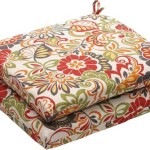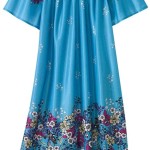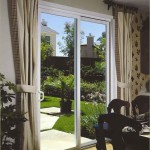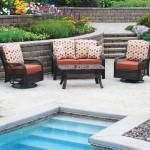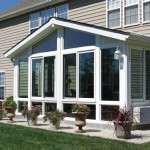How To Get Mold Off Patio Furniture
Mold growth on patio furniture is a common problem, especially in humid climates or shaded areas. Mold not only detracts from the appearance of outdoor spaces but can also pose health risks, particularly for individuals with allergies or respiratory sensitivities. Prompt and effective mold removal is crucial to maintain the beauty and longevity of patio furniture and ensure a healthy outdoor environment. This article provides a comprehensive guide on how to remove mold from various types of patio furniture materials, covering essential tools, cleaning solutions, and preventative measures.
Identifying Mold Growth on Patio Furniture
Before initiating the cleaning process, accurately identifying mold growth is paramount. Mold typically presents as dark green, black, or gray patches on surfaces. It may also appear fuzzy or slimy. Differential diagnosis is critical, as other substances, such as mildew, dirt, or algae, can mimic mold growth. Mildew often appears as a white or gray powdery substance, while algae may present as a greenish film. Distinguishing between these substances allows for the selection of the most appropriate cleaning method. If uncertainty persists regarding the substance's identity, a professional mold inspection may be warranted.
The location and surrounding environmental factors also provide clues about the likelihood of mold. Areas with poor air circulation, constant dampness, and shading are more susceptible to mold growth. Inspecting furniture cushions, the underside of tables, and crevices in chairs can reveal hidden mold colonies. Understanding the specific type of material comprising the patio furniture is also vital, as cleaning methods vary depending on the material's porosity and sensitivity to chemicals.
Essential Tools and Cleaning Solutions for Mold Removal
Effective mold removal necessitates the appropriate tools and cleaning solutions. The required tools typically include:
- Stiff-bristled brushes: These are used to scrub away mold and loosen debris from surfaces. Different sizes may be needed for various furniture components.
- Sponges: Sponges are useful for applying cleaning solutions and wiping down surfaces.
- Spray bottles: Spray bottles allow for the even distribution of cleaning solutions.
- Buckets: Buckets are needed to mix cleaning solutions and rinse furniture.
- Garden hose: A garden hose provides a convenient way to rinse off furniture after cleaning. A pressure washer can be used with caution, especially on delicate materials.
- Protective gear: Gloves, masks, and eye protection are essential to safeguard against potential exposure to mold spores and cleaning chemicals.
Several effective cleaning solutions can be employed to remove mold from patio furniture. The choice of solution depends on the severity of the mold growth and the type of furniture material:
- Mild soap and water: This is a gentle and effective option for routine cleaning and light mold removal. Dish soap or laundry detergent can be used.
- Vinegar: White vinegar is a natural disinfectant and mold killer. It can be used undiluted or diluted with water.
- Bleach solution: A diluted bleach solution (1 part bleach to 10 parts water) is a potent mold killer. However, bleach should be used with caution, as it can damage some materials and discolor fabrics. It must also be handled safely to avoid skin and eye irritation. Always test on an inconspicuous area first.
- Commercial mold and mildew removers: These products are specifically formulated to kill mold and mildew. Always follow the manufacturer's instructions carefully.
When selecting a cleaning solution, consider the potential impact on the environment. Environmentally friendly options, such as vinegar and certain commercial mold removers, are preferable to harsh chemicals like bleach.
Step-by-Step Guide to Removing Mold from Different Patio Furniture Materials
The method for removing mold varies based on the type of material. Here’s a detailed guide for different types of patio furniture:
Plastic and Resin Furniture
Plastic and resin furniture is relatively easy to clean. The procedure involves:
- Preparation: Move the furniture to a well-ventilated area. Put on gloves, a mask, and eye protection.
- Pre-cleaning: Use a stiff-bristled brush to remove loose dirt and debris.
- Cleaning: Mix a solution of mild soap and water or diluted vinegar in a bucket. Apply the solution to the furniture using a sponge or spray bottle.
- Scrubbing: Scrub the affected areas with a stiff-bristled brush, paying close attention to crevices and textured surfaces.
- Rinsing: Rinse the furniture thoroughly with a garden hose.
- Drying: Allow the furniture to air dry completely in the sun.
For stubborn mold stains, a diluted bleach solution can be used, but always test it on a small, inconspicuous area first to ensure it doesn't discolor the plastic. If using bleach, rinse thoroughly to remove all traces of the chemical.
Wood Furniture
Wood furniture requires more care, as it is porous and susceptible to water damage. The steps are as follows:
- Preparation: Move the furniture to a well-ventilated area and wear protective gear.
- Pre-cleaning: Brush off loose dirt and debris.
- Cleaning: Mix a solution of mild soap and water or diluted vinegar. Alternatively, use a commercial wood cleaner specifically designed for outdoor use.
- Scrubbing: Gently scrub the moldy areas with a soft-bristled brush or sponge. Avoid excessive scrubbing, which can damage the wood.
- Rinsing: Rinse the furniture lightly with water to remove the cleaning solution. Avoid saturating the wood.
- Drying: Allow the furniture to air dry completely. Place it in a sunny location to facilitate drying.
- Sealing (Optional): Once the wood is dry, consider applying a sealant or stain to protect it from future mold growth and water damage.
If mold growth is severe, a wood-specific mold remover can be used. Always follow the manufacturer’s instructions and test on an inconspicuous area first. Avoid using bleach on wood, as it can damage and lighten the wood.
Metal Furniture
Metal furniture is generally resistant to mold, but mold can grow on surface coatings or in crevices. The steps for cleaning metal furniture are:
- Preparation: Move the furniture to a well-ventilated area and wear protective gear.
- Pre-cleaning: Remove loose dirt and debris with a brush.
- Cleaning: Mix a solution of mild soap and water or diluted vinegar.
- Scrubbing: Scrub the affected areas with a sponge or soft-bristled brush. For stubborn mold, use a commercial metal cleaner.
- Rinsing: Rinse the furniture thoroughly with a garden hose.
- Drying: Allow the furniture to air dry completely.
- Rust Prevention (if applicable): If the metal is prone to rust, apply a rust-resistant coating or paint after cleaning.
For painted metal furniture, test the cleaning solution on a small area first to ensure it doesn't damage the paint. Remove rust before attempting mold removal, as rust can harbor mold spores.
Fabric Cushions and Upholstery
Fabric cushions and upholstery are particularly susceptible to mold growth. The steps include:
- Preparation: Remove the cushions from the furniture and move them to a well-ventilated area. Wear protective gear.
- Vacuuming: Vacuum the cushions thoroughly to remove loose dirt and mold spores. Use a vacuum cleaner with a HEPA filter to prevent spreading spores.
- Cleaning: Mix a solution of mild soap and water or diluted vinegar. Alternatively, use a commercial fabric cleaner specifically designed for outdoor use.
- Spot Treatment: Apply the cleaning solution to the moldy areas using a sponge or cloth. Gently blot the stains, avoiding excessive rubbing.
- Drying: Allow the cushions to air dry completely in the sun. Ensure they are completely dry before storing or using them. Consider using a dehumidifier or fan to expedite the drying process.
For machine-washable cushions, follow the manufacturer’s instructions for washing. Add bleach (if the fabric is bleach-safe) or vinegar to the washing machine to kill mold spores. If the mold infestation is severe or the cushions are not washable, professional cleaning may be necessary.
Preventative Measures to Inhibit Mold Growth
Preventing mold growth is more efficient than removing it. Several strategies can minimize the risk of mold on patio furniture:
- Regular Cleaning: Clean patio furniture regularly, especially after rain or periods of high humidity. Remove dirt, debris, and spills promptly.
- Proper Storage: During the off-season or periods of prolonged rain, store patio furniture in a dry, well-ventilated area. If storage space is limited, cover the furniture with waterproof covers that allow for some air circulation.
- Air Circulation: Ensure adequate air circulation around patio furniture. Trim overgrown plants and rearrange furniture to promote airflow.
- Waterproofing and Sealing: Apply waterproofing or sealing products to wood and fabric furniture to protect them from moisture.
- Dehumidifying: In humid climates, consider using a dehumidifier in covered patio areas to reduce moisture levels.
- Choosing Mold-Resistant Materials: When purchasing new patio furniture, opt for materials that are naturally resistant to mold and mildew, such as teak, aluminum, or synthetic fabrics.
By implementing these preventative measures, the likelihood of mold growth on patio furniture can be significantly reduced, preserving its appearance and extending its lifespan. Consistent maintenance and proactive care are important in maintaining a healthy outdoor living space.

Tips For Cleaning Mildew Off Your Outdoor Furniture

How To Remove Mildew From Outdoor Furniture Cushions

How To Clean Mould Off Outdoor Cushions And Furniture

Scrub Free Way To Clean Your Moldy Patio Furniture Just Spray With Tilex Mold And Mildew Bleach Rinse I Couldn T Beleive My Eyes Sprayed One Turned Around Do

5 Ways To Remove Mold Mildew From Outdoor Cushions Prudent Reviews

How To Remove Mold And Mildew From Patio Furniture Cushions Umbrellas

How To Clean Patio Furniture Mesh Complete Guide

Diy Methods To Clean Mold Algae Around Your Home Kalamazoo Pressure Washing Services

How To Clean Mold Mildew Off Wood Patio Furniture

Outdoor Furniture Care Avoiding Mold Mildew




